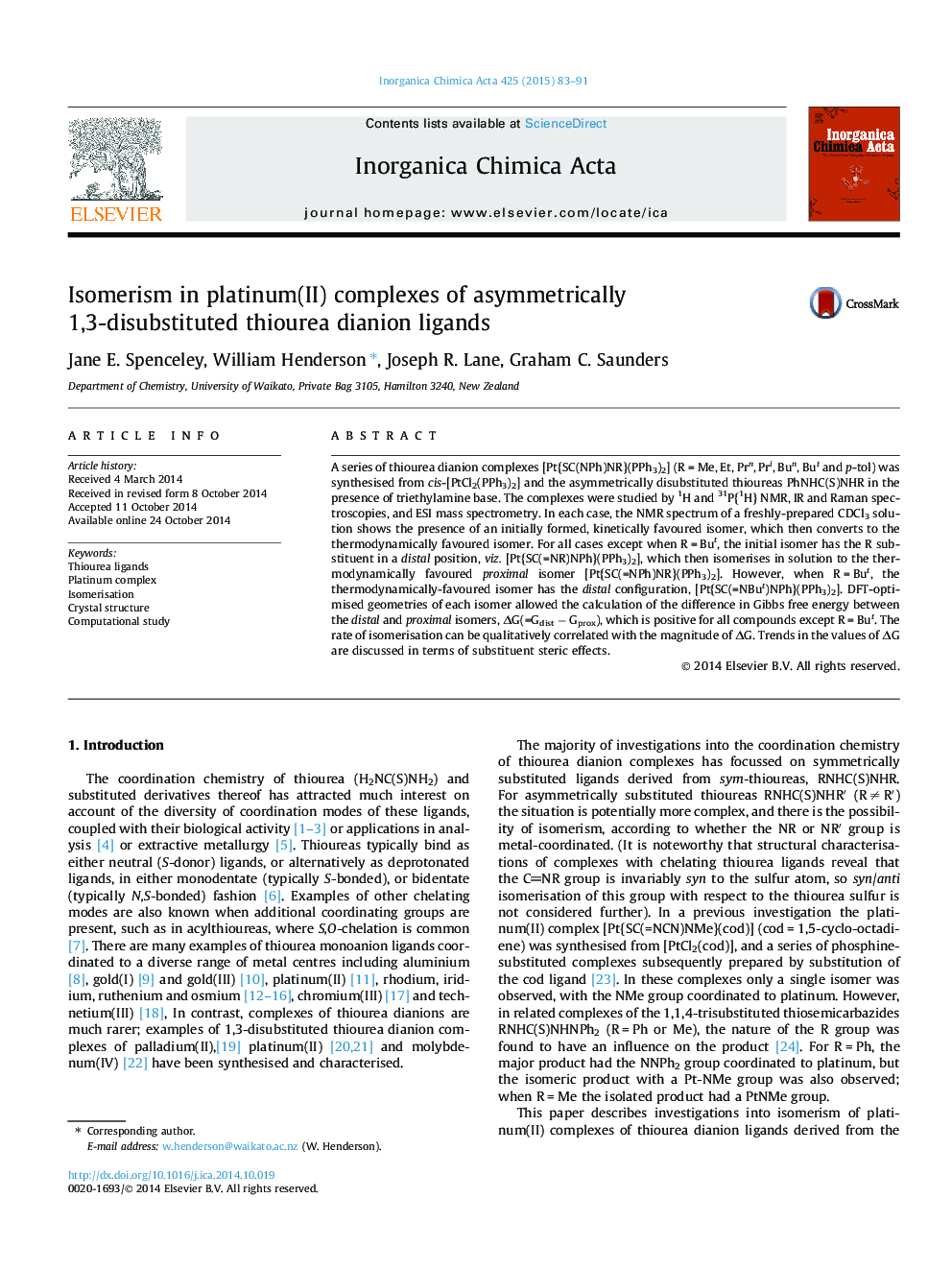| کد مقاله | کد نشریه | سال انتشار | مقاله انگلیسی | نسخه تمام متن |
|---|---|---|---|---|
| 1309268 | 1499164 | 2015 | 9 صفحه PDF | دانلود رایگان |

• Series of platinum(II) complexes of asymmetric thiourea dianions synthesised.
• Isomerisation process investigated by 1H and 31P{1H} NMR spectroscopies.
• DFT calculations provide information on relative energies of proximal and distal isomers.
• X-ray structure of proximal isomer [Pt{SC(=NPh)NEt}(PPh3)2] is reported.
A series of thiourea dianion complexes [Pt{SC(NPh)NR}(PPh3)2] (R = Me, Et, Prn, Pri, Bun, But and p-tol) was synthesised from cis-[PtCl2(PPh3)2] and the asymmetrically disubstituted thioureas PhNHC(S)NHR in the presence of triethylamine base. The complexes were studied by 1H and 31P{1H} NMR, IR and Raman spectroscopies, and ESI mass spectrometry. In each case, the NMR spectrum of a freshly-prepared CDCl3 solution shows the presence of an initially formed, kinetically favoured isomer, which then converts to the thermodynamically favoured isomer. For all cases except when R = But, the initial isomer has the R substituent in a distal position, viz. [Pt{SC(=NR)NPh}(PPh3)2], which then isomerises in solution to the thermodynamically favoured proximal isomer [Pt{SC(=NPh)NR}(PPh3)2]. However, when R = But, the thermodynamically-favoured isomer has the distal configuration, [Pt{SC(=NBut)NPh}(PPh3)2]. DFT-optimised geometries of each isomer allowed the calculation of the difference in Gibbs free energy between the distal and proximal isomers, ΔG(=Gdist − Gprox), which is positive for all compounds except R = But. The rate of isomerisation can be qualitatively correlated with the magnitude of ΔG. Trends in the values of ΔG are discussed in terms of substituent steric effects.
A series of thiourea dianion complexes [Pt{SC(NPh)NR}(PPh3)2] (R = Me, Et, Prn, Pri, Bun, But and p-tol) was synthesised from cis-[PtCl2(PPh3)2] and the asymmetrically disubstituted thioureas PhNHC(S)NHR in the presence of triethylamine base. With the exception of the t-butyl complex, all complexes initially form the distal isomer, with the NR group remote from the platinum centre, and a coordinated NPh group; isomerisation occurs in solution to the thermodynamically more stable proximal isomer with a coordinated NR group. The isomerisation process was investigated by NMR spectroscopy and DFT calculations; the X-ray structure of the proximal isomer of [Pt{SC(=NPh)NEt}(PPh3)2] is also reported.Figure optionsDownload as PowerPoint slide
Journal: Inorganica Chimica Acta - Volume 425, 30 January 2015, Pages 83–91